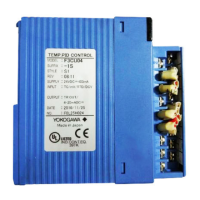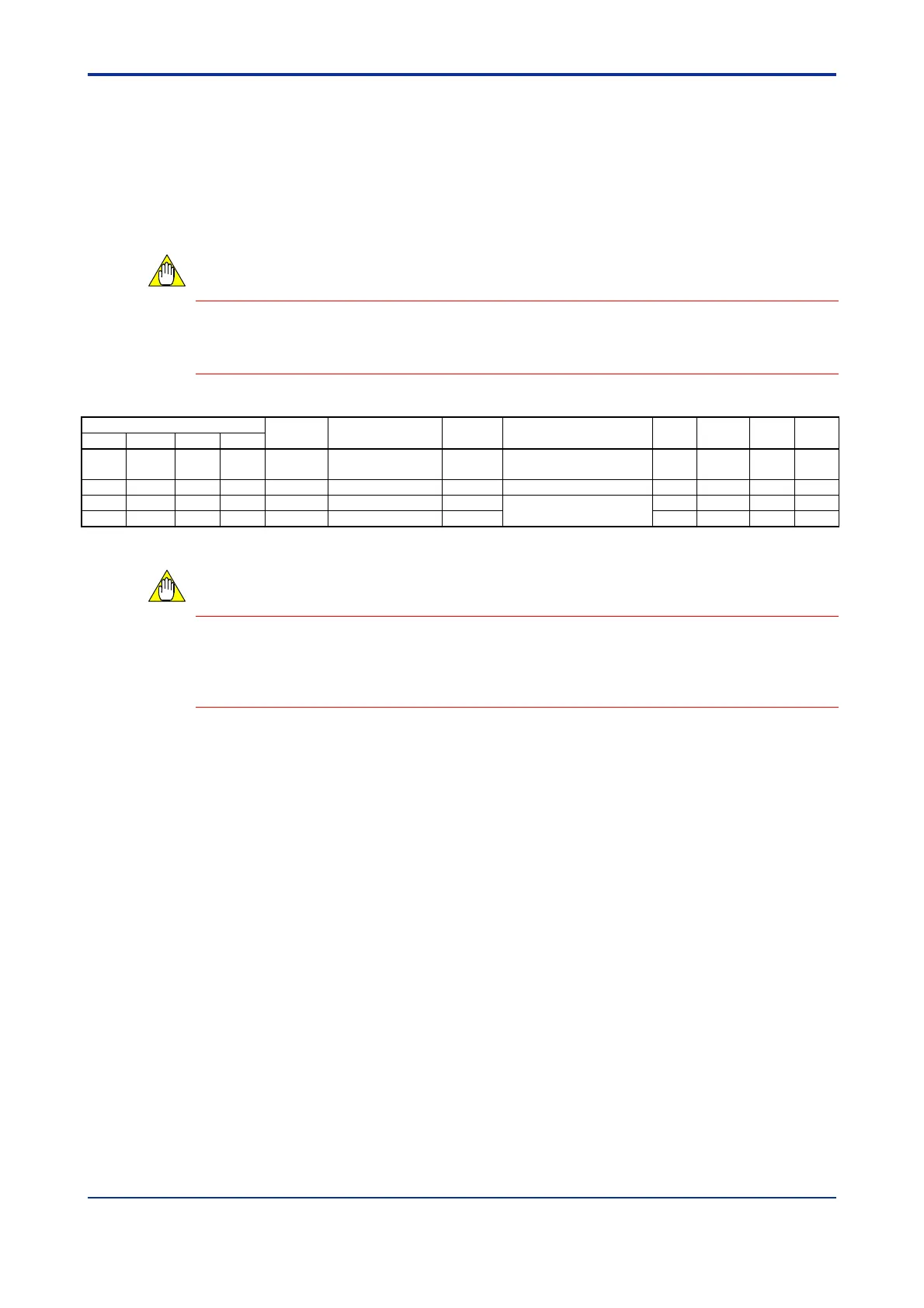B3-14
IM 34M06H62-02E 2nd Edition : June 2008-00
B3.3.2 Preparing for PID Control
To perform PID control without dynamic auto-tuning, you must manually set the PID
control parameters, namely, the Proportional Band (PB), Integral Time (TI) and Derivative
Time (TD) parameters according to the characteristics of the controlled object. If you
specify inappropriate PID parameter values, you will not be able to achieve the desired
control. You may directly change the PB, TI, and TD registers, or use the auto-tuning
function to let the module adjust the parameter values automatically.
Before directly changing the PB, TI or TD register, you must set the Dynamic Auto-tuning
Enable (SELF) parameter to “0: disabled.” Otherwise, the dynamic auto-tuning function
will overwrite the modified value.
Table B3.12 Operation Parameters That Must be Set for PID Control
*1
Data Position Number
Symbol Description Unit Data Range
Default
Value
Attribute Stored
See
Also
Loop 1 Loop 2 Loop 3 Loop 4
201 401 601 801 1.SP Set point
Industrial
unit
PRL to PRH PRL RW C4.1
206 406 606 806 1.PB Proportional band % 1 to 9999 (0.1 to 999.9%) 50 RW C6.2
207 407 607 807 1.TI Integral time Second
0: OFF
1 to 6000 (1 to 6000 s)
240 RW C6.3
208 408 608 808 1.TD Derivative time Second 60 RW C6.4
*1 To switch between PID parameter groups, see Section C4, "SP-related Functions."
You need to execute a specific procedure every time to update stored set point values.
Otherwise, stored set points will not be updated so the parameters revert to their last
stored values whenever the module is turned off and then on again. For details, see
Section B2.4, "How to Back up SP Values to EEPROM."
Set the PID control parameters PB, TI, and TD in Table B3.12 to appropriate values. To
set these parameters automatically with the auto-tuning function, first define the set point,
and then start the auto-tuning function as described below. Let us assume that the set
point to be used is 1.SP.
CAUTION
CAUTION

